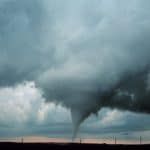Bring back the Office of Technology Assessment
By Laura H. Kahn | May 20, 2007
During an April 2007 speech at a Princeton University colloquium titled, “From Passion to Politics: What Moves People to Take Action,” New York State Gov. Eliot Spitzer admitted that the world changes more by technology than by politics. He added that emotions can obscure facts and that political discourse requires an agreed-upon set of facts before policy can be rationally discussed. Unfortunately, politicizing scientific facts has never been more prevalent.
For more than a decade, Congress has essentially operated in the dark when passing science and technology legislation. It remains in the dark because of what Chris Mooney, the author of The Republican War on Science, terms “a stunning act of self-lobotomy.” As Mooney details in his book, congressional Republicans made eliminating the Office of Technology Assessment (OTA), Congress’s authoritative scientific advisory body, a top priority when they took power in 1994. (For an excerpt, see the September/October 2005 Bulletin article, “Requiem for an Office”.)
According to Mooney, a Democratic-controlled Congress created OTA in 1972 because of its general distrust of the Nixon administration. During that era, like today, there was growing public concern about technology-induced hazards. The stakes are higher today with global climate change, emerging infectious diseases, antibiotic-resistant bacteria, environmental destruction, energy dependence on fossil fuels, human overpopulation, and nuclear terrorism–to name just a few.
During its existence, OTA provided Congress with in-depth technical assessments to support congressional decision making. By estimating the economic, social, and environmental impacts of technological advancements, it was known for its impartial advice and analysis. OTA published up to 55 reports each year, and its work was diverse, evaluating everything from health-care technology to agricultural needs. Nothing has come close to filling its mandate since.
Bill Creager, who worked at OTA as an AAAS postdoctoral fellow and who now works in the financial services industry, scanned all of OTA’s reports and archived them at the OTA Legacy website hosted by Princeton. So OTA is gone, but not forgotten.
New Jersey Democratic Rep. Rush Holt, a physicist, testified before the House Science Committee in July 2006 that Congress needed to have a dedicated source of nonpartisan advice in order to pass responsible legislation. (Full disclosure: Holt represents my New Jersey district.) Holt told the committee, “None of us in Congress have time to analyze scientific and technical advances and make reasoned, logical determinations of their impact on industry, nations, and education. But we vote on decisions about topics on a regular basis that include technical or scientific components.”
According to Holt, OTA was never de-authorized; it was just de-funded. So, in theory, OTA could be brought back if enough members of Congress supported it. Holt is not the only person advocating for OTA’s return; the editors of Scientific American wrote an opinion piece in the February 2007 issue recommending its restoration.
Some might argue that Congress already has an important source of scientific and technical advice–the National Academy of Sciences (NAS), which Abraham Lincoln signed into existence in 1863. Today, the NAS incorporates the National Academy of Engineering and the Institute of Medicine, along with its “operating arm,” the National Research Council. NAS serves an important advisory role, but according to Peter D. Blair, executive director of the National Research Council’s Division on Engineering and Physical Sciences, it is best suited to empanel expert committees that recommend specific courses of action in response to specific science-related challenges.
In contrast, OTA looked at science and technology from a broader societal context. It investigated the potenial unforeseen social, economic, and environmental consequences of a technology’s widespread implementation and communicated its findings in language carefully tuned to congressional audiences. OTA used a process in which committees of science and technology experts served as advisers rather than as the report’s authors. (NAS does not separate the two responsibilities.) OTA reports did not make specific consensus policy recommendations, but rather, sought the views of all the important stakeholders and then explained the possible consequences of alternative courses of action to help inform congressional debate.
This type of information is critical for Congress to responsibly implement and oversee policies dealing with alternative energy sources, biodefense research, and other complex issues. OTA would provide Congress the broad perspective needed to write the best possible legislation. Given our current domestic and global mess, we need all the help we can get.
Together, we make the world safer.
The Bulletin elevates expert voices above the noise. But as an independent nonprofit organization, our operations depend on the support of readers like you. Help us continue to deliver quality journalism that holds leaders accountable. Your support of our work at any level is important. In return, we promise our coverage will be understandable, influential, vigilant, solution-oriented, and fair-minded. Together we can make a difference.
Topics: Columnists














